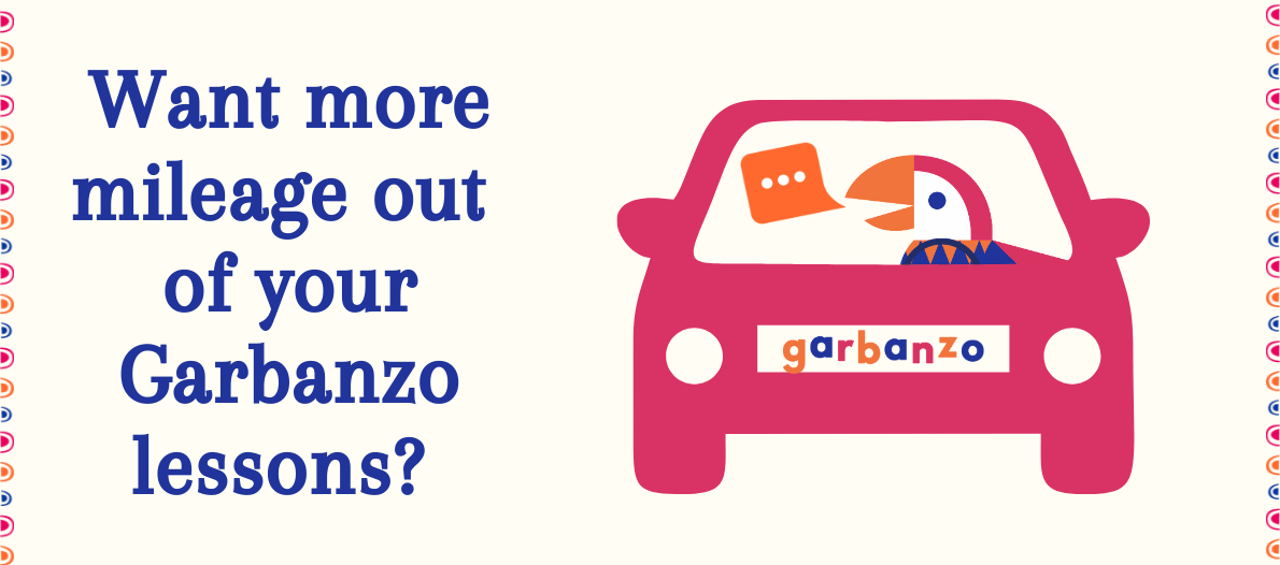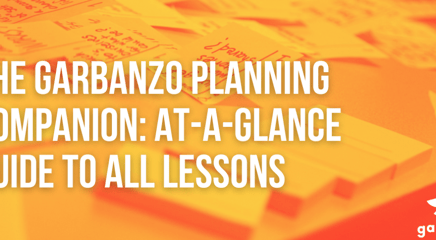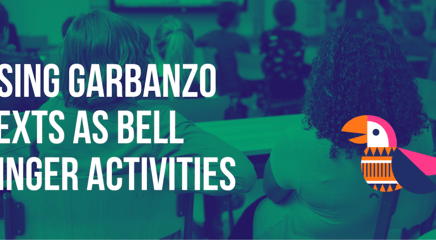Are you using Garbanzo lessons to their fullest potential?
Do you have go-to, low-prep activities to extend student learning AFTER a Garbanzo reading? In this post, we'll share three easy ways to get more mileage out of a Garbanzo lesson AND provide more input for your students. Keep reading to fill-up on some great tips and snag three FREE printables to use in your classrooms today!
Imagine your students are cars that run on input and you are the fuel source.

To get them to their destination (proficiency, of course), you must continuously fill their tanks with comprehensible input. But don’t you wish you could set cruise-control some days and catch-up on work or get those grades in the gradebook? With Garbanzo, you can!
Reading and listening to a Garbanzo story is a premium, high-octane source of input for your students. In fact, it’s the perfect follow-up to a story that you have already done in class or for students to read about a new topic without you having to guide them through it. Our built-in repetition and processing questions already do the work for you. While Garbanzo stories are great independent reading (and listening) activities, the input doesn’t have to stop there. Below are 3 activities for you to use with your students AFTER they complete the Garbanzo story of your choice.
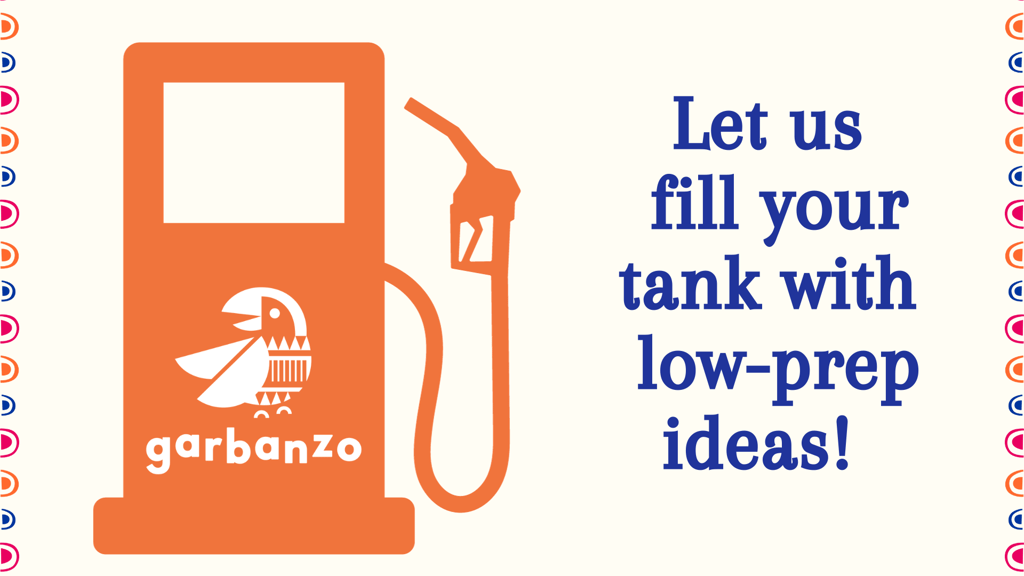
Activity #1: Garbanzo Alphaboxes
Alphaboxes are the perfect activity to use if you want to RECALL together what happened in a story that you read OR if you want to REVIEW the facts you learned about a topic.
After students complete their Garbanzo story, display this Alphabox slide with spaces reserved for each letter of the alphabet. Starting with letter A, ask students to share words from the story or text that begin with that letter. Once students give you a word, ask them to put it in CONTEXT: what is the sentence from the story in which it was used? How is it connected to the topic? Use the words to guide discussion on the story. You will be amazed at what your learners can come up with based on what they read. Remember, it’s not just about the words; it’s about the ideas those words represent and the input that students receive by the whole class discussion. After one or more words have been shared, move on to the next letter! See if students can complete the whole alphabet. If students cannot come up with a word for a certain letter, NO problem! Move on to the next.
Pro tip: To give students more processing time or if you want students to complete this activity while looking at the text, distribute this worksheet for students to fill-out WHILE they complete the Garbanzo lesson.
Read more about Alphaboxes and how to use them in your classroom on the Comprehensible Classroom’s Blog.
Activity #2: Four Square Story Map
The Four Square Story Map is the ideal activity for students to complete during or after reading a Garbanzo story. Students read the story, write the title in the center, and then they write something positive, negative, and something important from the story, and a question with which it left them. This type of activity allows students to interact with the text on a more personal level, and will help foster critical thinking skills. The extra effort students put forth looking for connections leads to better retention of the information as well!
Download the printable Four Square Story Map here.
Pro-tip: You could change the categories to keep this activity novel. “Something interesting”, “Something surprising”, or “Something you already knew” are all great categories, too!
Activity #3: First, Second
First/Second is a post-reading activity where students listen to statements from the story to determine if they occurred first or second.
After students finish reading, have them take out a sheet of paper and draw a line down the middle. Write "Primero" (first) on the left and "Segundo" (second) on the right. Draw a horizontal line beneath it to set it apart as the heading, then number the paper for however many questions each student will need to answer (3-5 is plenty).
The teacher simply needs to have the full text summary open. This can be found in the Garbanzo lesson overview or the final slide. For each question, give the students two short events from the story in the target language. Title them as "A" and "B" so that students can differentiate between the two statements. Ex: A: The boy goes to school. B: The boy sees his friends. Students will determine which event happened first in the story, and which event happened second. If you want to use a ready-made printable for this activity then click here.
Pro-tip: Gamify this activity by playing First, Second Partner Race. See the instructions on Martina’s blog here.
Below are a couple examples of how the activities might look!
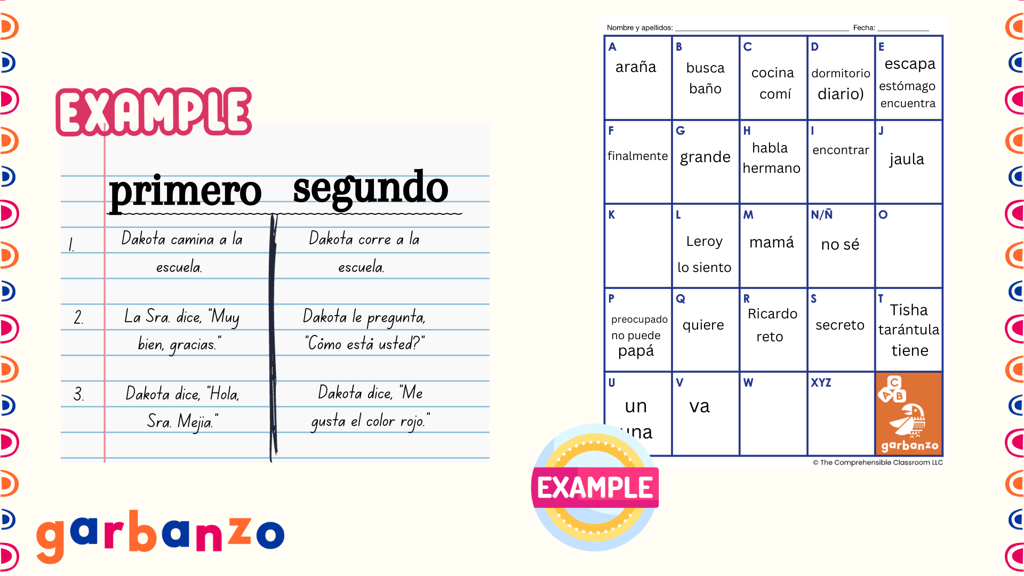
Remember, it's not the words or letters themselves that matter; they are simply the means to generate classroom discussion and provide your students with MORE input! So, if you're running low on energy, let Garbanzo do the work and try out one of these activities this week.
Tag us on social to let us know how it went!
